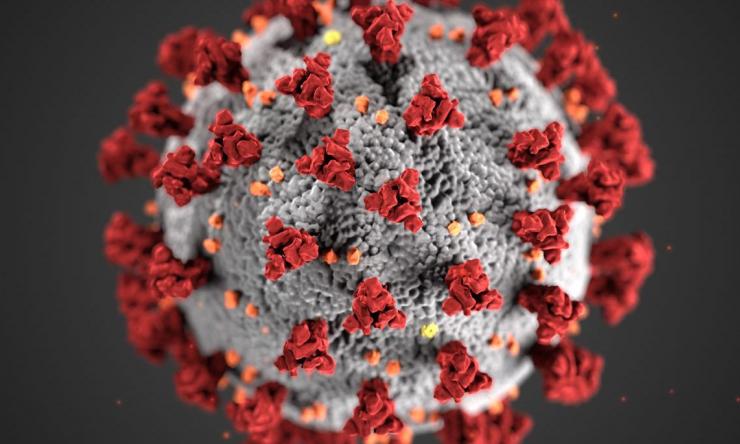COVID-19 patients have increased oxidative stress, oxidant damage, and glutathione deficiency
Researchers at Baylor College of Medicine have investigated the effect of infection with COVID-19 on the levels of oxidative stress, oxidant damage and glutathione, the most abundant physiological antioxidant. Compared to healthy age-matched individuals whose samples were taken before the pandemic started in 2019, patients hospitalized with COVID-19 had significantly increased levels of oxidative stress and oxidant damage, and markedly reduced levels of glutathione.
The results, published in the journal Antioxidants, suggest that supplementation with GlyNAC, a combination of glutathione precursors previously shown to reduce oxidative stress and oxidant damage and increase glutathione as well as improve health indicators such as inflammation, might be beneficial to COVID-19 patients. However, GlyNAC supplementation has not as yet been studied in association with COVID-19.
“Increased oxidative stress and reduced glutathione levels are associated with a number of conditions including ageing, diabetes, HIV infection, neurodegenerative disorders, cardiovascular disorders, neurometabolic diseases, obesity and others,” said corresponding author Dr. Rajagopal Sekhar, associate professor of medicine in the section of endocrinology, diabetes and metabolism at Baylor. “We suspected that COVID-19 also might be affecting oxidative stress and glutathione, and in this study we confirmed this in adults hospitalized with COVID-19. We found that these defects occur in all adult age groups, including young people, and worsen with increasing age.”
Sekhar and his colleagues worked with 60 participants (25 women, 35 men; age range 21 to 85 years old), who had been admitted to the hospital based on a diagnosis of COVID-19. The team measured the levels of oxidative stress, oxidant damage and glutathione in the patients’ blood samples and compared them with those from healthy individuals.
The researchers organized the samples in three different groups, according to the age of the COVID-19 patients: the 21- to 40-year-old group, the 41 to 60 and the 61 and above. In earlier work, Sekhar’s group had shown that in healthy adults, the levels of oxidative stress, oxidative damage and glutathione remain stable until people enter their 60s, when oxidative stress and oxidative damage begin to increase and glutathione to decline. COVID-19 infection changed this pattern.
“We were surprised to see that the COVID-19 patients in the 21 to 40 and the 41 to 60 groups had much less glutathione and more oxidative stress than the corresponding age groups without COVID-19,” Sekhar said. “We knew that healthy people without COVID-19 above the age of 60 years tend to be glutathione-deficient and have elevated oxidative stress. However, when the 60-plus age group gets COVID-19, their glutathione levels were much lower and oxidative stress was much higher than those of a similar age but without COVID-19.”
“This is an important new discovery,” Sekhar said. “The finding that younger people with COVID-19 also are glutathione deficient and have elevated oxidative stress and oxidant damage is really surprising, because we do not normally see these defects in younger age groups. These defects appear to get progressively worse with increasing age, and the oldest patients with COVID-19 had higher level of defects in these outcomes. We propose that these changes might be involved in the disease.”
Oxidative stress results from the accumulation of free radicals, highly reactive molecules that can damage cells, membranes, lipids, proteins and DNA. Cells in the body make glutathione to protect themselves from oxidative stress. When cells fail to neutralize free radicals, harmful cellular damage can occur and potentially affect many physiological processes.
“Our previous work has shown that increased levels of oxidative stress and reduced glutathione are not only present in older people, but also in people with HIV, a viral infection, and in patients with diabetes. We also found that supplementing GlyNAC, a combination of glutathione precursors, improved these defects in all these populations,” Sekhar said.
In addition, Sekhar’s work revealed that supplementing GlyNAC to older people and HIV-patients reversed other abnormalities including inflammation, endothelial dysfunction, insulin resistance, and improved muscle strength, exercise capacity, cognitive decline, gene-damage, and body composition. Some of these defects also have been reported in patients with COVID-19.
“Based on our earlier findings on the effects of GlyNAC supplementation in other populations and the current finding that people hospitalized with COVID-19 had glutathione deficiency and increased oxidative stress, we considered whether GlyNAC supplementation could also combat these defects in COVID-19 and potentially be valuable in helping the body fight this serious infection. The effects of GlyNAC supplementation in patients with COVID-19 remain to be investigated in future research studies,” Sekhar said.
Other contributors to this work include co-first authors Premranjan Kumar, Ob Osahon and David Vides, as well as Nicola Hanania and Charles G. Minard, all with Baylor College of Medicine.
This research received no external funding.










